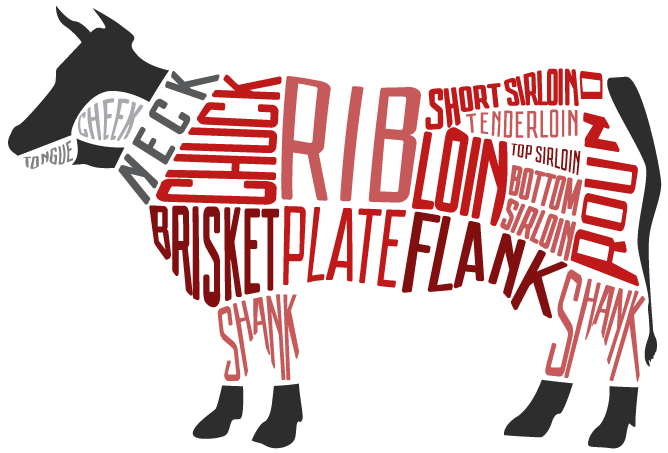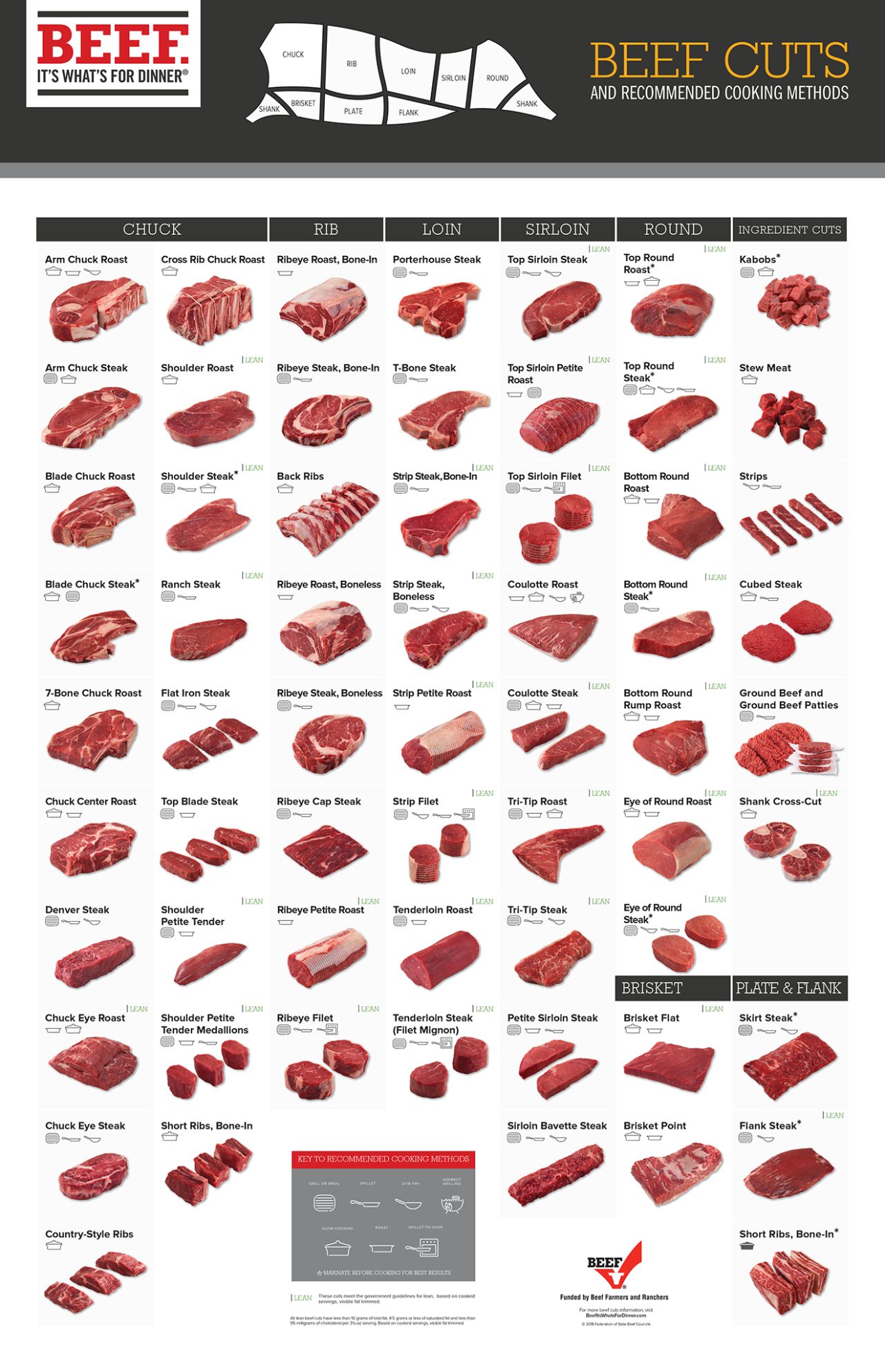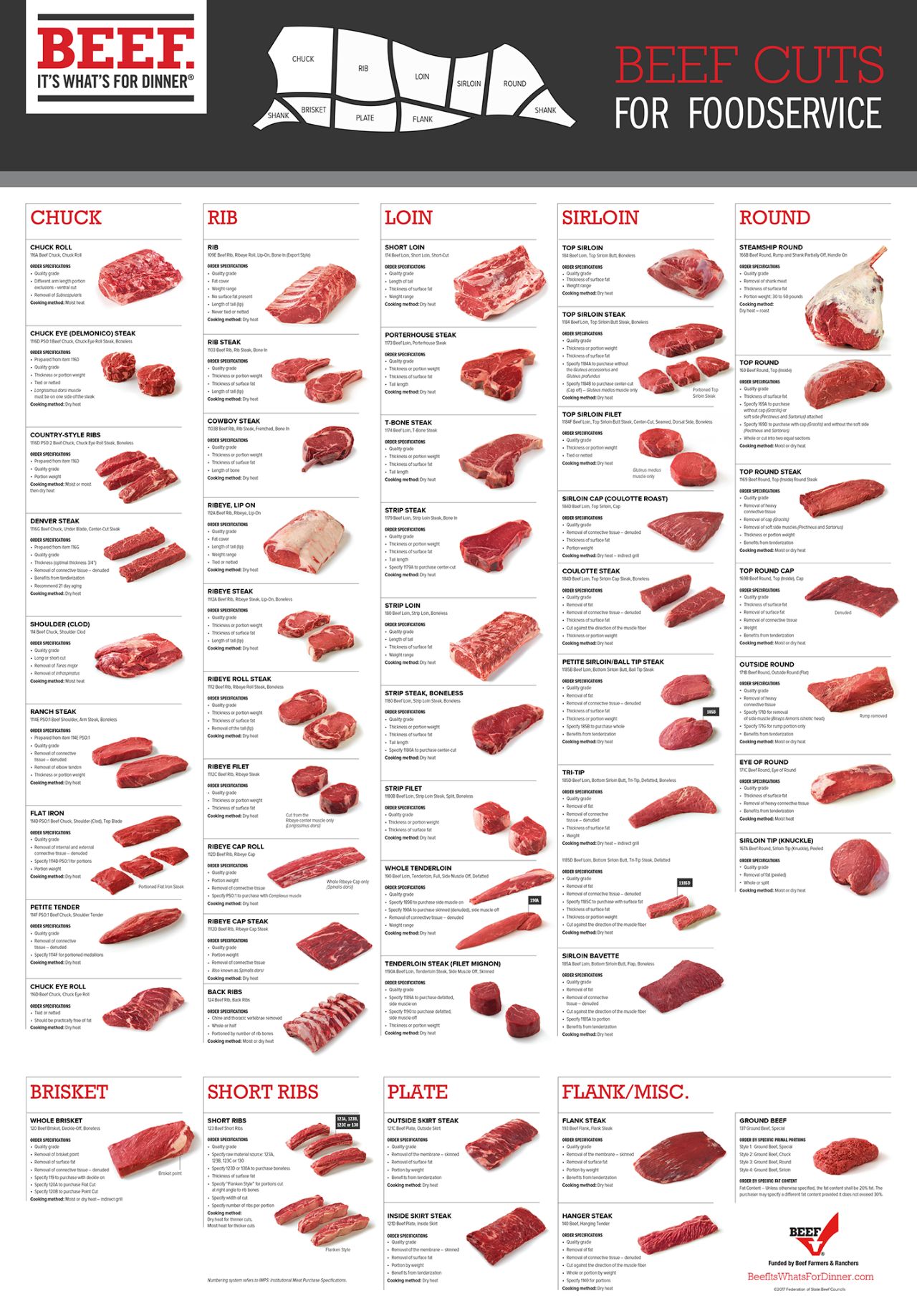
Chuck: 107.5 lbs.
chuck roast or steak, arm roast or steak, short ribs, stew beef & ground beef
Brisket: 25.8 lbs.
brisket
Rib: 38.7 lbs.
rib eye steak, rib steaks, back ribs, stew beef & ground beef
Plate: 30.1 lbs.
skirt steak, short ribs, ground beef
Loin: 38.7 lbs.
porterhouse steak, t-bone steak, stew beef & ground beef
Sirloin
tri-tip roast, tri-tip steak, top sirloin steak
Round 103.2 lbs.
round steak, rump roast, sirloin tip steak, pikes peak roast, cubes steaks, stew beef & ground beef
Shank 17.2 lbs.
shank soup bone, stew beef, ground beef
Flank 17.2 lbs.
flank steak, short ribs, ground beef
1000 lb. Steer = 430 lbs. Cuts (approx.)
Not all of the cow makes it to the table. On average, a 1,000 pound steer will only weigh approximately 61% of its live weight once it is dressed and hanging in the cooler. The remaining 61% is often referred to as the “Hanging Weight” or the weight “On the Rail”. This approximately 39% weight loss happens during the slaughter and dressing procedure that removes the animals blood, hide, head, hooves, viscera, lungs, and heart. But the loss doesn’t stop there. Once the carcass is on the rail it begins to lose moisture and shrink, which accounts for additional weight loss. The fat and bone removal during the cutting combined with the shrinkage on the rail account for an additional 18% loss. In summary, a steer weighing 1,000 pounds live will yield an average of around 430 pounds of retail cuts such as steaks, roasts, ribs, etc.
Our cattle are bred, born and raised on our farm with quality genetics, marbling and excellent care in mind. Our hormone-free calves are started on grass pasture and finished on our own hay and feed purchased from a local feed mill. We believe this process not only produces the best quality meat, but it also allows us to support a local business!
We offer meat in mixed quarters, halves or whole. A full grown steer is approximately 1250 (live) pounds, we sell based on the hanging weight which averages about 650-750 pounds (thus a quarter of beef will yield you approximately 150 pounds of meat assuming some cuts are bone in.)
We sell quarter, halves and wholes.
Processing is paid separately to the processor.
We use Glenville Packing, LLC in Bucyrus
Glenville offers an exceptionally clean state inspected facility and great customer service, too! They are so helpful in walking our clients through the cut choices available.
Packaging is available in freezer paper (the highest grade available on the market) or vacuum seal. Freezer paper averages and vacuum seal are .65/pound.
Summary: Buying a half of beef is the better buy as a consumer. It give you the availability to have larger cuts of meat because you are breaking the animal down less. It also gives you a better deal on the processing cost.
Please let us know if you have any questions about our cattle or the process to purchase – we are happy to help! Frozen finished product will be delivered to you. A flat delivery fee of $25 will be charged for deliveries over 50 miles. Again, thanks for your interest!
This is Glenville Packing’s cut sheet. Within a week of animal being dropped off for harvest they will call you to discuss your order. Delivery time-frame averages two weeks after order instructions have been received.
BEEF CUTS CHART FOR BUTCHERS
The meat cuts chart for butchers contains different sub-primal cuts with recommended cooking methods and lean designations.

BEEF CUTS CHART FOR FOODSERVICE
The meat cuts chart for foodservice contains the IMPS/NAMP number for each cut as well as order specifications and the cut tree.

Images from Beef It’s What’s For Dinner
